Fair readers, help me solve the mystery of my pine trees.
They have been on the little hump of land I call home for decades before my arrival, but I don’t believe they are Natives. I have never seen pines anywhere else on Cape Cod that look like them.
These resemble something from the West Coast, akin to those windblown sentinels doing yoga along the rocky coast of Northern California, only bigger.
Their trunks have real girth and grow horizontally almost as much as vertically, twisting, curving, hooking as they rise. Their bark has more red, copper, and orange than any tree around here, sometimes papery, flaking like a sycamore to reveal different shades beneath — though this likely is a sign of poor health.
Their needles grow in sets of two, avoiding the little ditty I was taught as a kid; if the needles are in clusters of three it’s a red pine for r-e-d, and if the needles are in fives it’s a white pine for w-h-i-t-e.
Their wood is longer grained, harder, less sappy than our scrubs but not as hard and straight as old long-leaf yellow pine from the Carolinas, none of that amber density and strength.
You can burn chunks in a woodstove and not create creosote and chimney fires, but it is not dense, surprising with a balsa-like lightness.
I believe them to be slow growing, this from observation only over the past decade so maybe false. But I also see now that many of the biggest are withering. I do not know if they have lived their lives out, or some kind of disease or animal is weakening them. I suspect the latter.
Maybe because they feel endangered or maybe as a natural matter, they are prolific about making small, handsome pine cones with thick prickly fingers, so I hope to see more trees arising to take the elders’ places. I’m not sure yet; when they are young they are hard to distinguish from “regular” red pines, until they reach a certain size and their limbs begin to redden like a blush, and start curving and contorting. The differing needle clusters do give it away on close examination.
Once I was told that in the 1930s, during the Great Depression, when the government created the Works Progress Administration (WPA) to implement all kinds of public service projects, people were paid to fan out across the deforested Cape and plant trees. A handsome swath of cedars on one side of my hill is said to be from that time. Maybe these pines are too.
Fair readers, do me a favor. Solve my mystery and tell me about my pines. I’d be grateful.
NEXT: HERE’S WHO CAN END THIS MILITARY MACHINE GUN RANGE MADNESS
Haven’t subscribed yet? Here’s how to keep seeing a Voice:





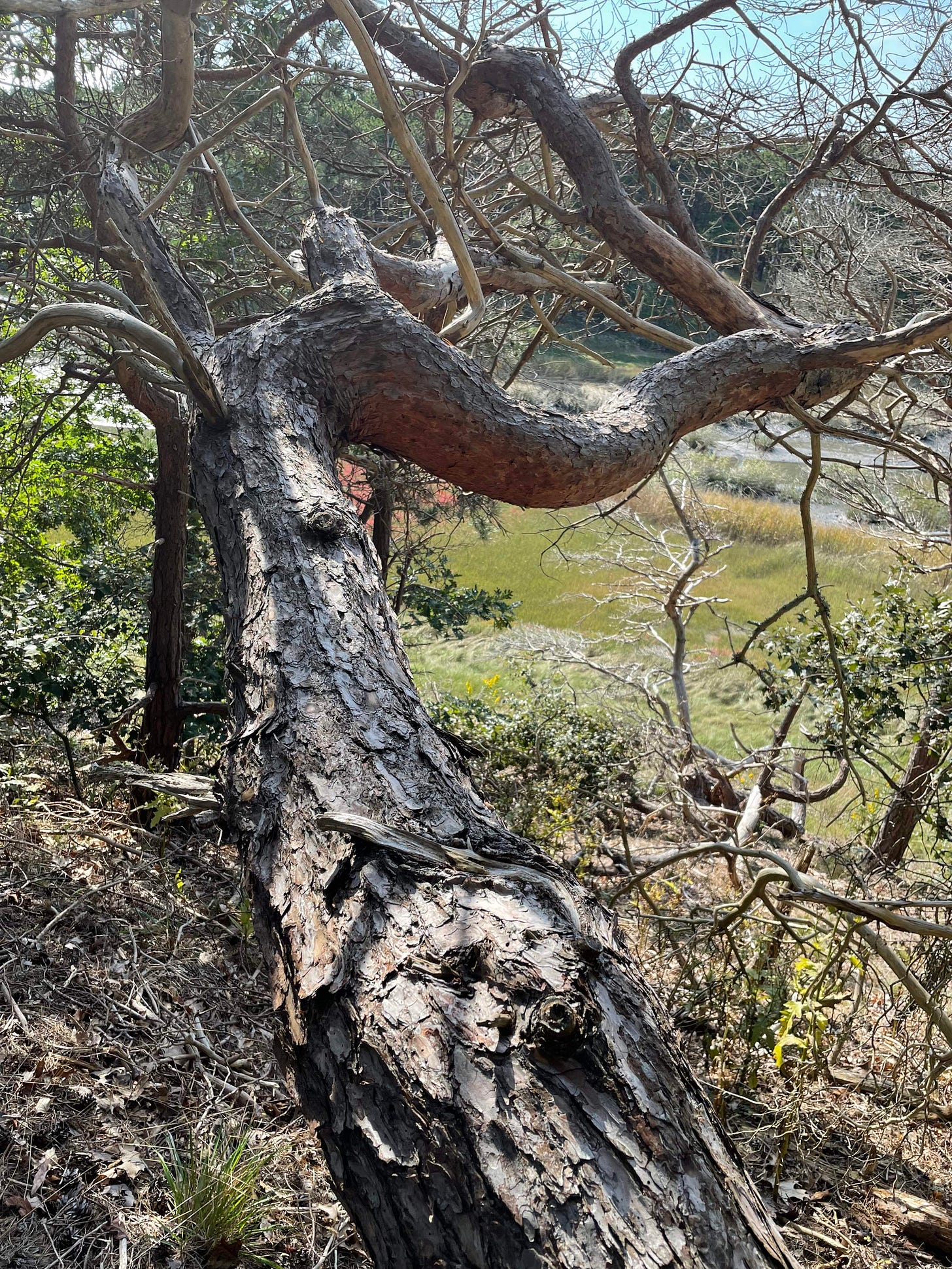
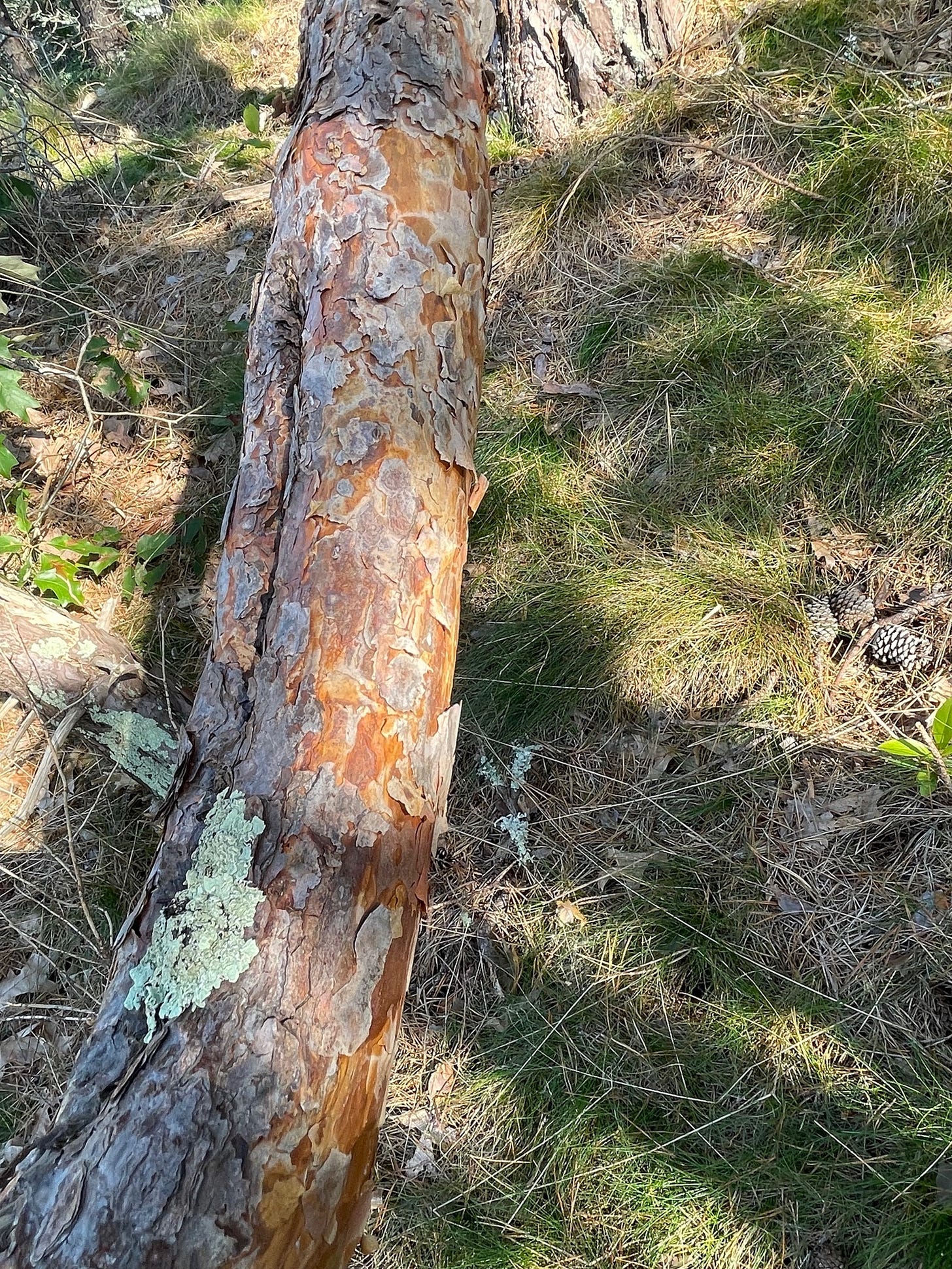
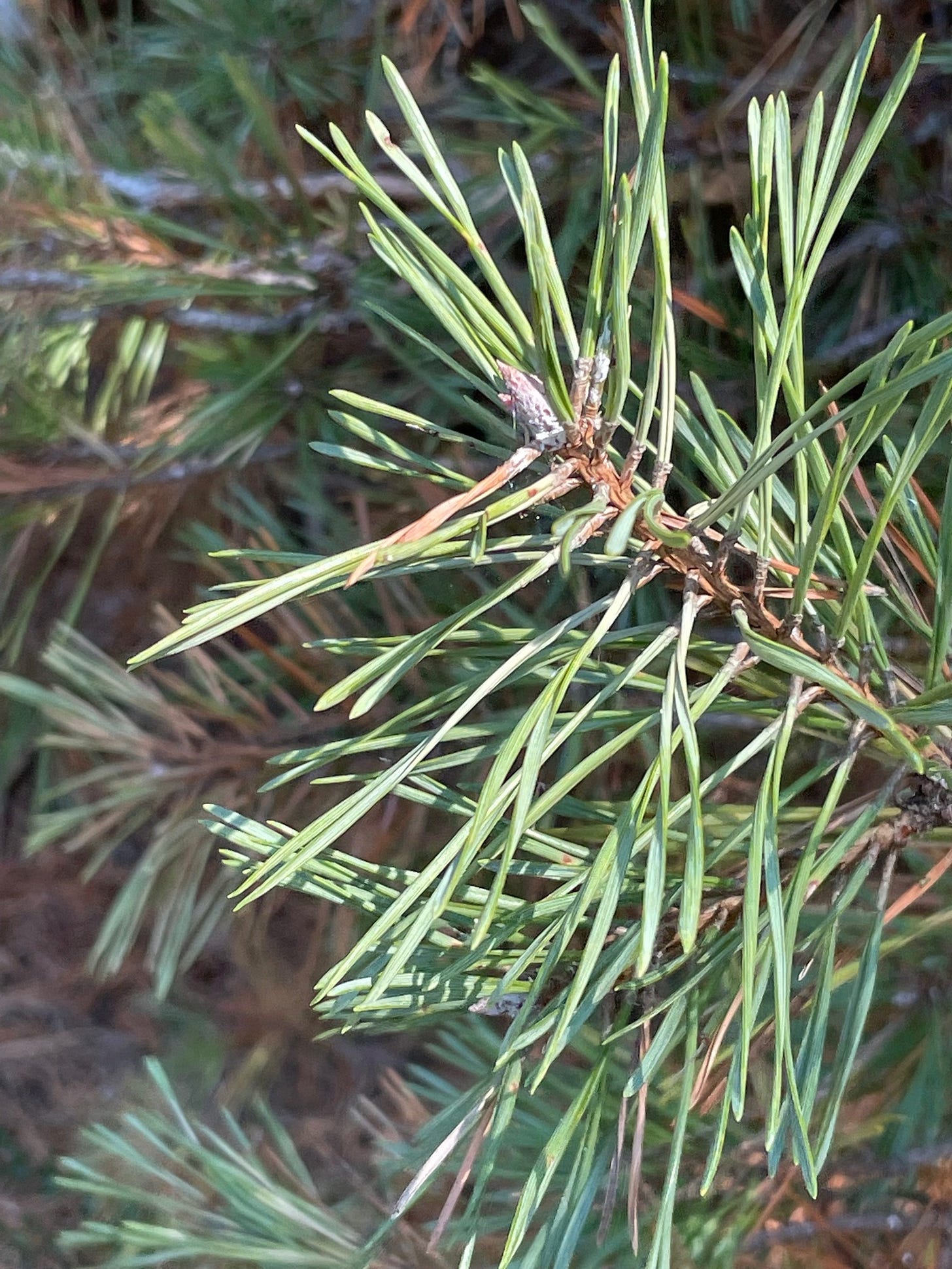
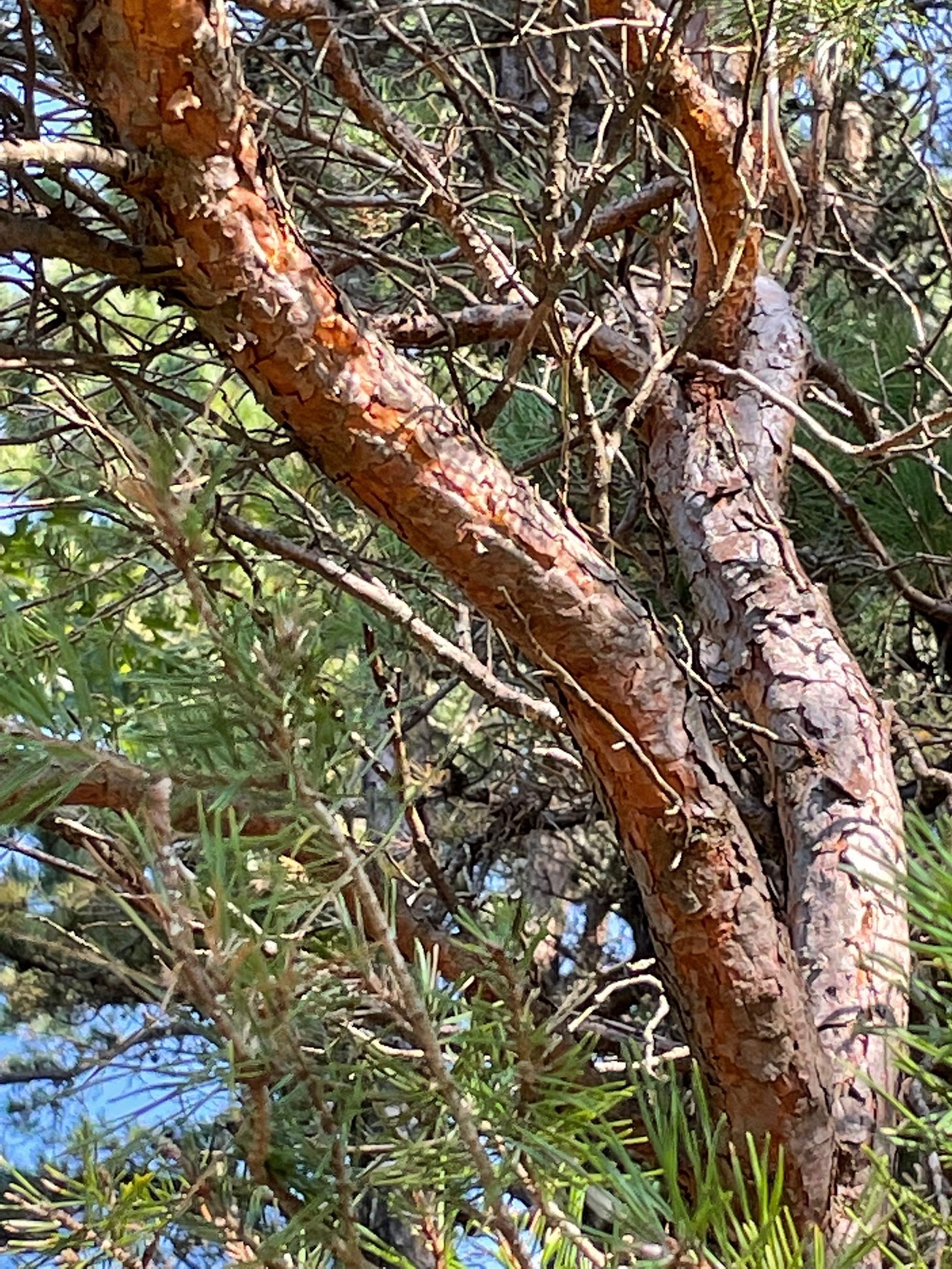
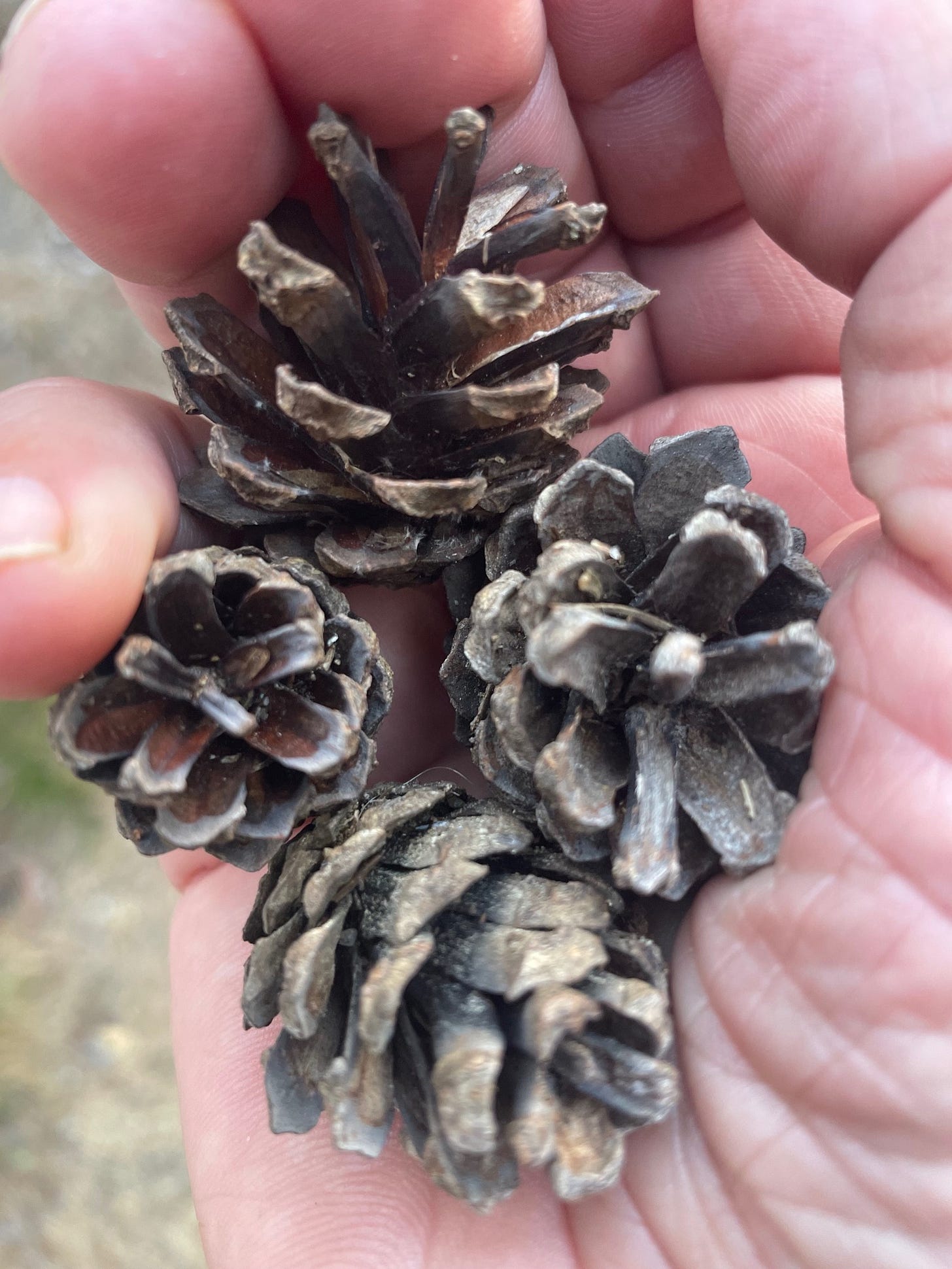
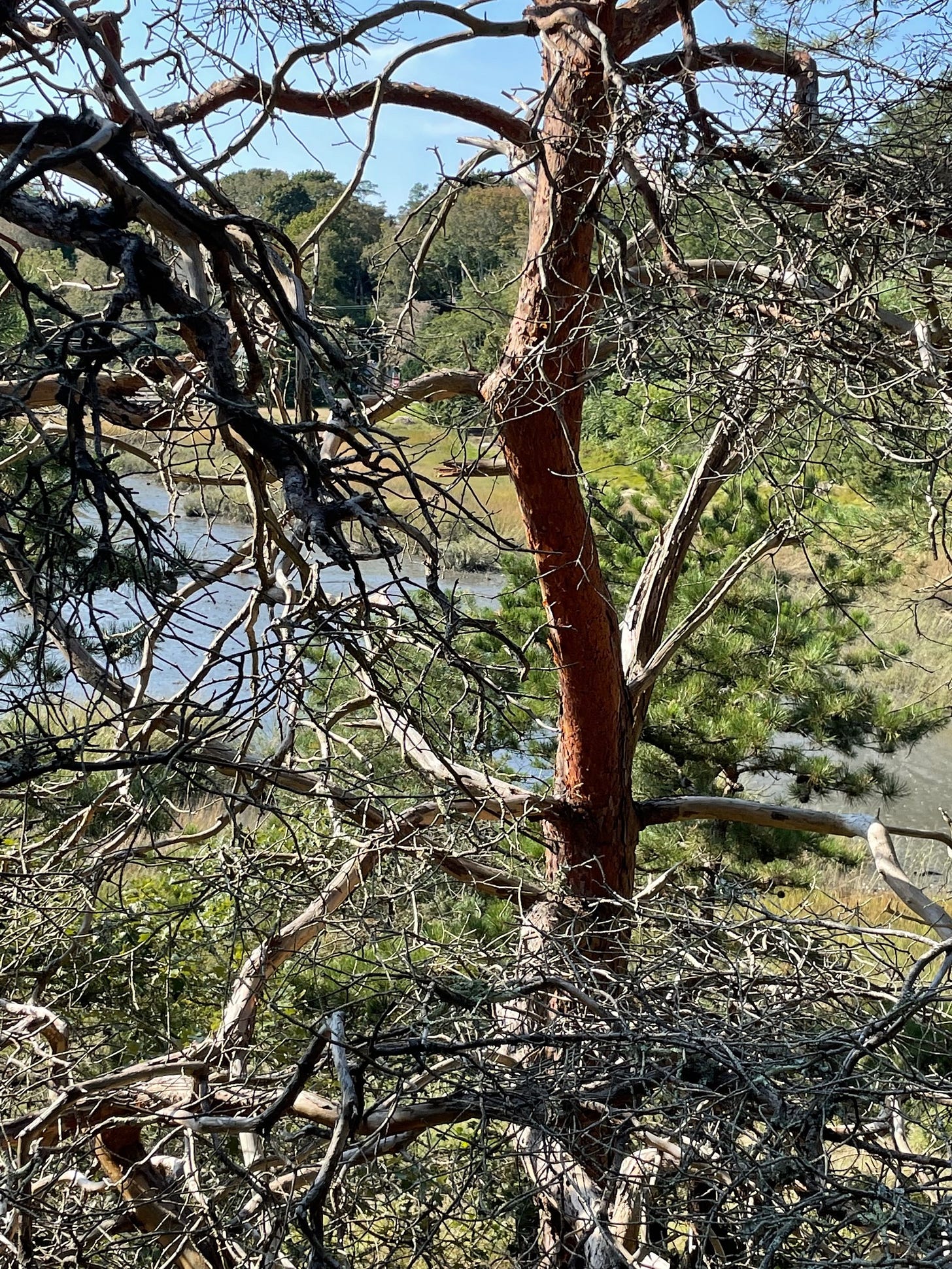
Your photos are of pitch pines. They are the first trees to come up on denuded land. They grow in sand and turn brown with salt water spray and tropical storms that carry sea water. Under these conditions they develop a pretty good size tap root for fresh water. One average size tree will easily drink a hundred of gallons of water a day in summer. Nevertheless they are like a bonsai tree in a small dish. Never growing up like pines in central and western mass.
So stem size is not a reflection of their age. Due to harsh conditions here…the closer to the salt the more mangled and smaller they are. See this as you drive up the highway off cape..away from the ocean they get bigger.
Wood is of better quality too…fibers won’t crack when you build with it. I couldn’t even build a small draw handle with cape cod pitch pine wood. I have seen some thick slab woods work as boards but the Miller really needs to know what s/he is doing. The wood and it’s other parts burn like paper. Good fire starting material compared to oak.
Our pitch pines die from the bottom up.
You can judge their age by how many branches are green up to the crown. A pitch pine on its last legs will have a green top and that’s it. Eventually that will die - you then get a ton of pine cones and sticks on the ground, the bark falls off and we are left with a whiteish stick. In other words, they slowly melt. In the process they provide good insect and bird habitat.
Few fall over or cause damage- they look more ominous than they are. Really got to have a hell of a blow to get them to go over.
One will have oaks go too in those storms.
Snow can catch in their needles and bend them over. They will snap if stems and branches are frozen under those conditions.
They also die around here quickly from pine bore beetles. Those buggers can be detected by oval holes in the stem. Only thing to do to protect other nearby pine trees that may be unaffected is cut and remove the infected tree wood from the forest area.
So if you like your pines, don’t go pruning them. Removal of their lower branches will take years off their life.
Take out oak and maple, locust…other tree saplings if you want to keep a pine forest going. Otherwise the hardwood s - mostly oaks will dominate.
Enjoy their sound with the wind in them.
The smell of needles cooking in a hot June sun. The cool shade in summer and green in winter ?
Almost hard to call them trees but I love them.
I would guess that these are Scotch pine (Pinus sylvestris) since they have 2 twisted needles per fascicle. It could possibly be Virginia pine (P. virginiana), but the cones look different than I'm used to seeing . Pitch pines have 3 needles per fascicle.
I would also guess that their contorted growth form is the result of its location, being exposed to heavy winds, sandy soil, salt spray, etc.